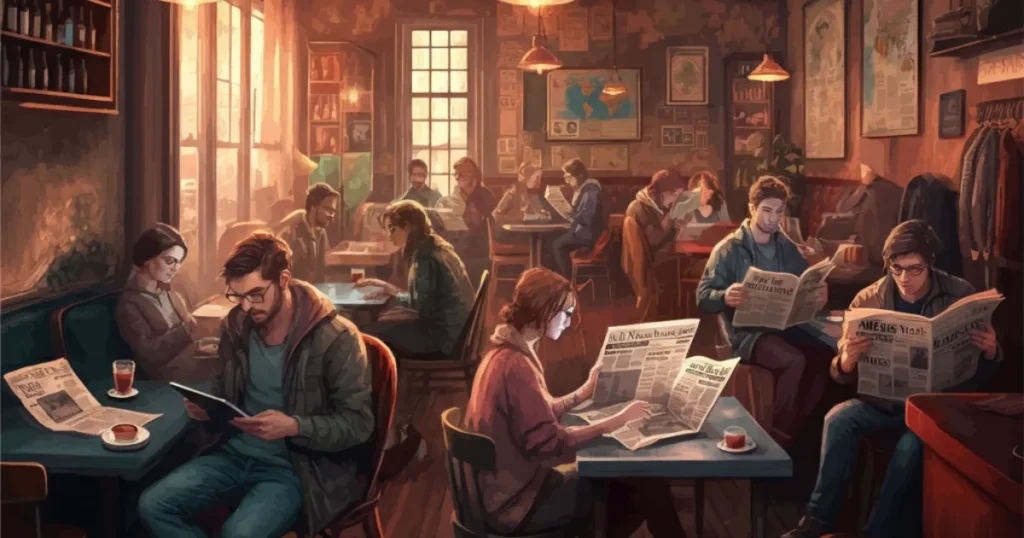“La synthèse de la presse,” or “press synthesis,” refers to the act of compiling and summarizing key news and stories from various media outlets. It’s not simply a translation of headlines but rather a deliberate process of selecting, comparing, and condensing news to provide a well-rounded view of what’s happening in the world. This practice helps readers save time while still gaining a nuanced understanding of diverse topics.
Why is la synthèse de la presse important? Today’s media landscape is saturated, with hundreds of outlets publishing breaking news, investigative reports, and opinion pieces daily. For French media consumers, news junkies, and students, synthesizing the press is an essential skill that can:
- Save time by consolidating crucial information.
- Provide clarity amid an overwhelming sea of information.
- Foster critical thinking by exposing readers to different perspectives.
Understanding how to perform an effective press synthesis is especially important in a democracy, where an informed and engaged populace supports a strong civic culture.
Join us as we explore how to approach press synthesis, the tools that can help, and its impact on education and civic engagement.
Overview of Key French Newspapers and Media Outlets
To create a successful press synthesis, you need to know where to look. France has a rich ecosystem of newspapers, broadcasters, and online outlets offering diverse perspectives. Below are some of the noteworthy names across the French media landscape.
National Newspapers
- Le Monde
Known for its in-depth analysis, Le Monde is one of the most reputable newspapers in France. It’s trusted for factual reporting and comprehensive coverage of international and domestic affairs.
- Le Figaro
France’s oldest national daily newspaper, Le Figaro leans more conservative in its editorial stance. Its coverage includes politics, business news, and cultural events.
- Libération
For readers seeking progressive or leftist viewpoints, Libération provides an alternative lens on current events. Its bold headlines often spark conversation.
Regional Media
Regional outlets such as Ouest-France (western France) and La Dépêche du Midi (southern France) capture regional news stories often absent from national coverage.
Broadcast and Online News
- France 24 (International audience)
A global news broadcaster focusing on French and world events.
- BFMTV
A 24-hour news channel, popular for breaking news and live event coverage.
- Mediapart
Subscription-based platform famous for investigative journalism. Its independent approach often uncovers stories missed elsewhere.
A successful press synthesis strategy involves consulting a mix of these sources to balance national outlooks, regional perspectives, and investigative depth.
How to Effectively Synthesize Information from Multiple Sources
Synthesizing the press is part science, part art. Follow these steps to refine your approach:
Step 1: Define Your Purpose
Before you browse the day’s headlines, ask yourself what you need to know. Are you looking for updates on a specific topic like French politics or global economy trends? Or are you trying to stay broadly informed about current events?
Step 2: Gather Sources
Identify primary and secondary sources. Primary sources (like interviews or live reports) provide firsthand accounts, while secondary sources analyze or interpret those events. Balance opinion-driven outlets like Libération with fact-first newsrooms like Le Monde.
Step 3: Look for Overlapping Themes
A good synthesis goes beyond simply listing stories by source. Compare headlines and narratives to identify recurring themes or noteworthy contradictions between sources. For instance, how do Le Monde and Le Figaro interpret economic reforms introduced in France?
Step 4: Summarize and Prioritize
Distill the information into key points relevant to your purpose. Use concise summaries while avoiding oversimplification. Prioritize information that resonates across multiple reputable sources to ensure its credibility and relevance.
Analyzing Bias and Perspective in Different News Outlets
No journalist works in a vacuum. Every organization’s editorial choices are influenced by its audience, history, and funding. This can lead to subtle (or overt) biases that shape the angle, tone, or framing of stories.
Left, Right, and Center in French Media
- Left-Leaning Media (e.g., Libération, Mediapart) often emphasize social justice, labor policies, and progressive reforms.
- Right-Leaning Media (e.g., Le Figaro, Valeurs Actuelles) may highlight economic liberalism, law-and-order issues, and conservative religious values.
- Center-Leaning Media (e.g., Le Monde) strive for balance but are not immune to criticism for editorial slants on occasion.
How to Spot Bias
- Headline Framing: Does the headline subtly suggest approval or criticism? For example, compare “Government Implements Long-Awaited Tax Reform” with “Controversial Tax Reform Sparks Public Outrage.”
- Source Attribution: Does the article use data and quotes from credible, diverse sources, or rely heavily on a single perspective?
- Word Choice: Loaded language can reveal bias. Words like “controversial” or “radical” carry judgment, unlike neutral descriptors such as “new” or “proposed.”
By being aware of these factors, you can critically analyze each source and form your own opinions.
Tools and Resources for Staying Informed and Saving Time
Staying current doesn’t mean you need to spend hours reading every article. Plenty of tools make synthesizing your press consumption faster and easier.
Aggregators and Platforms
- Google News
Customizable by region or topic, Google News gathers headlines from various French and international outlets.
- Feedly
Create your own news feed by subscribing to select publications’ RSS feeds.
- Euronews Smart App
Offers a multilingual, European perspective on global events.
Email Newsletters
- Le Monde’s Daily Recap
Keeps you updated on key stories in just a few minutes.
- Courrier International
For summaries of how French events are covered globally.
These tools empower you to scan, compare, and digest the news efficiently, saving you precious time.
The Role of “La Synthèse de la Presse” in Education and Civic Engagement
One of the most critical roles of press synthesis lies in education. Schools and universities in France often encourage students to engage with “la synthèse de la presse” to develop analytical thinking and research skills. By comparing multiple news stories, students learn to recognize bias, understand editorial decisions, and evaluate arguments critically.
Similarly, for everyday citizens, understanding diverse perspectives through press synthesis fosters active participation in democracy. From local election debates to global crises, staying informed makes individuals better equipped to vote, advocate, and engage in meaningful discussions. An informed citizenry ultimately strengthens the public debate and holds leaders accountable.
Be an Empowered, Critical News Consumer
Mastering the art of “La Synthèse de la Presse” is more than just a time-saving skill. It’s about empowerment. By filtering through spins and biases and building a clear, detailed understanding of issues, you become a smarter consumer of media and, more importantly, a more active, engaged participant in society.
Take the time to explore multiple perspectives. Leverage tools and newsletters to stay ahead. Challenge yourself, your peers, and your assumptions while creating your own synthesis. Because when you’re informed, you’re unstoppable.






